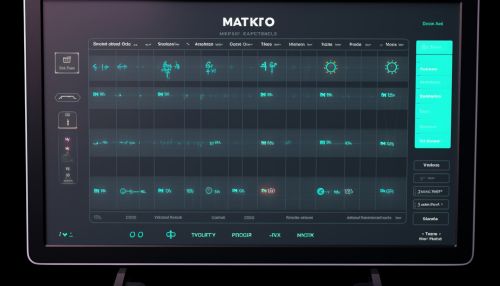Matrix Testing
Introduction
Matrix testing is a method of software testing that involves the execution of tests in a systematic and planned manner. This approach is used to ensure that the software behaves as expected under different combinations of inputs and conditions. The term "matrix" in matrix testing refers to the use of a two-dimensional table or matrix, which maps out the various combinations of inputs and conditions that the software will be tested under.


Overview
Matrix testing is a type of black box testing, where the internal workings of the software are not known to the tester. The tester is only concerned with the inputs and the outputs of the software, and not with how the software produces the output from the given input. The main objective of matrix testing is to identify defects or anomalies in the software that could lead to incorrect or unexpected outputs.
Matrix testing is often used in conjunction with other testing techniques such as boundary value analysis and equivalence partitioning. These techniques help in identifying the different combinations of inputs and conditions that need to be tested.
Process
The process of matrix testing involves several steps:
1. Identification of Variables: The first step in matrix testing is to identify the variables that can influence the behavior of the software. These variables could be inputs to the software, conditions under which the software operates, or any other factors that can affect the software's output.
2. Creation of the Matrix: Once the variables have been identified, the next step is to create a matrix that maps out the different combinations of these variables. Each row in the matrix represents a test case, and each column represents a variable.
3. Execution of Tests: The tests are then executed according to the matrix. Each test case in the matrix is executed, and the output of the software is compared with the expected output.
4. Analysis of Results: After the tests have been executed, the results are analyzed to identify any defects or anomalies in the software.
Advantages and Disadvantages
Matrix testing has several advantages:
- Comprehensive Coverage: Matrix testing ensures that the software is tested under a wide range of inputs and conditions, providing comprehensive coverage of the software's functionality.
- Systematic Approach: Matrix testing provides a systematic approach to software testing, making it easier to plan, execute, and manage the testing process.
- Identification of Interactions: Matrix testing can help in identifying interactions between different variables that could affect the software's output.
However, matrix testing also has some disadvantages:
- Time-Consuming: Creating the matrix and executing all the test cases can be time-consuming, especially for complex software with many variables.
- Requires Expertise: Matrix testing requires a good understanding of the software and its behavior, as well as expertise in testing techniques.
Applications
Matrix testing is used in various domains, including:
- Software Development: In software development, matrix testing is used to test software applications to ensure that they function correctly under different combinations of inputs and conditions.
- Hardware Testing: Matrix testing is also used in hardware testing to test the behavior of hardware devices under different conditions.
- Network Testing: In network testing, matrix testing is used to test the behavior of networks under different traffic conditions and loads.
See Also
- Software Testing - Black Box Testing - Boundary Value Analysis - Equivalence Partitioning - Hardware Testing - Network Testing
